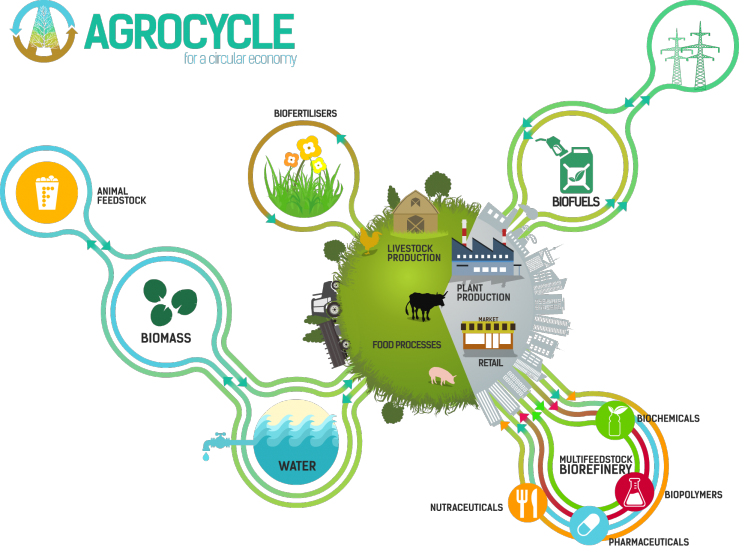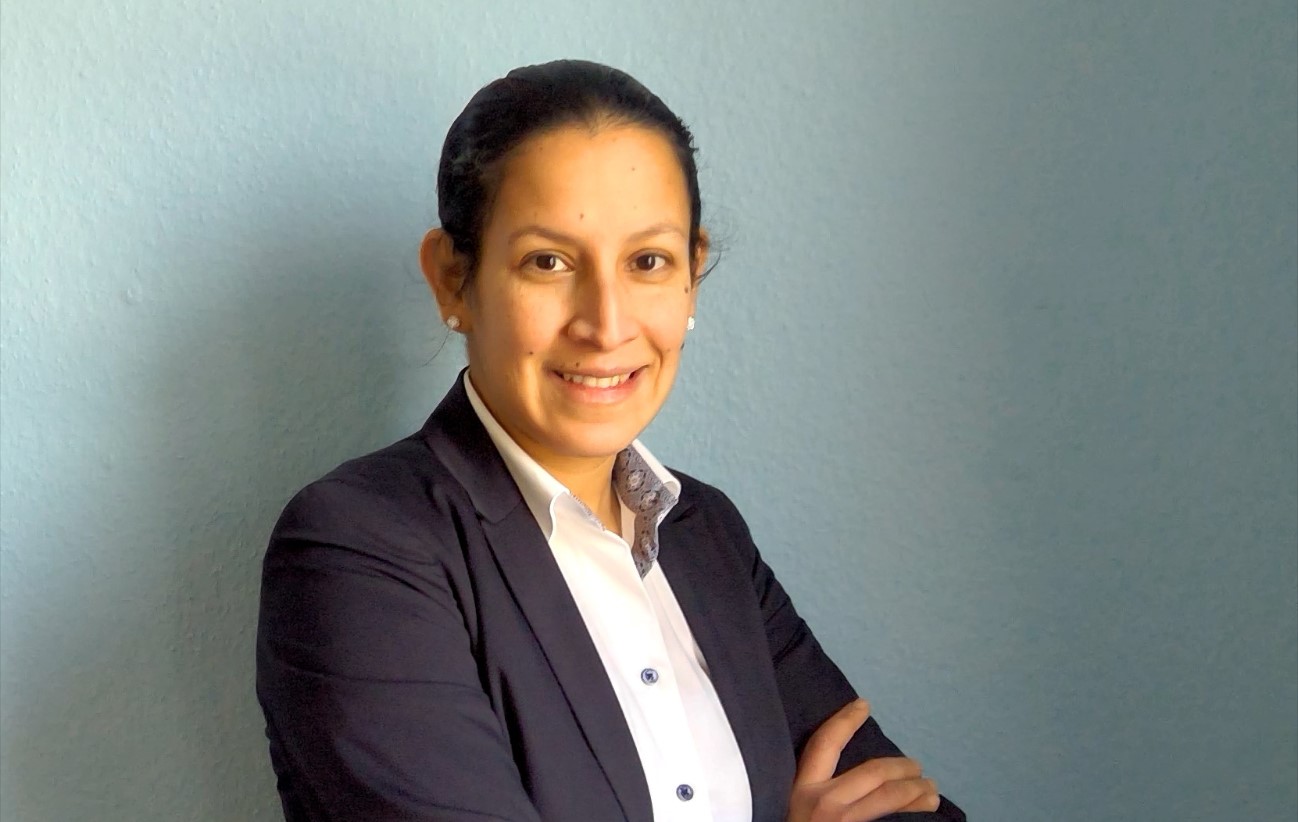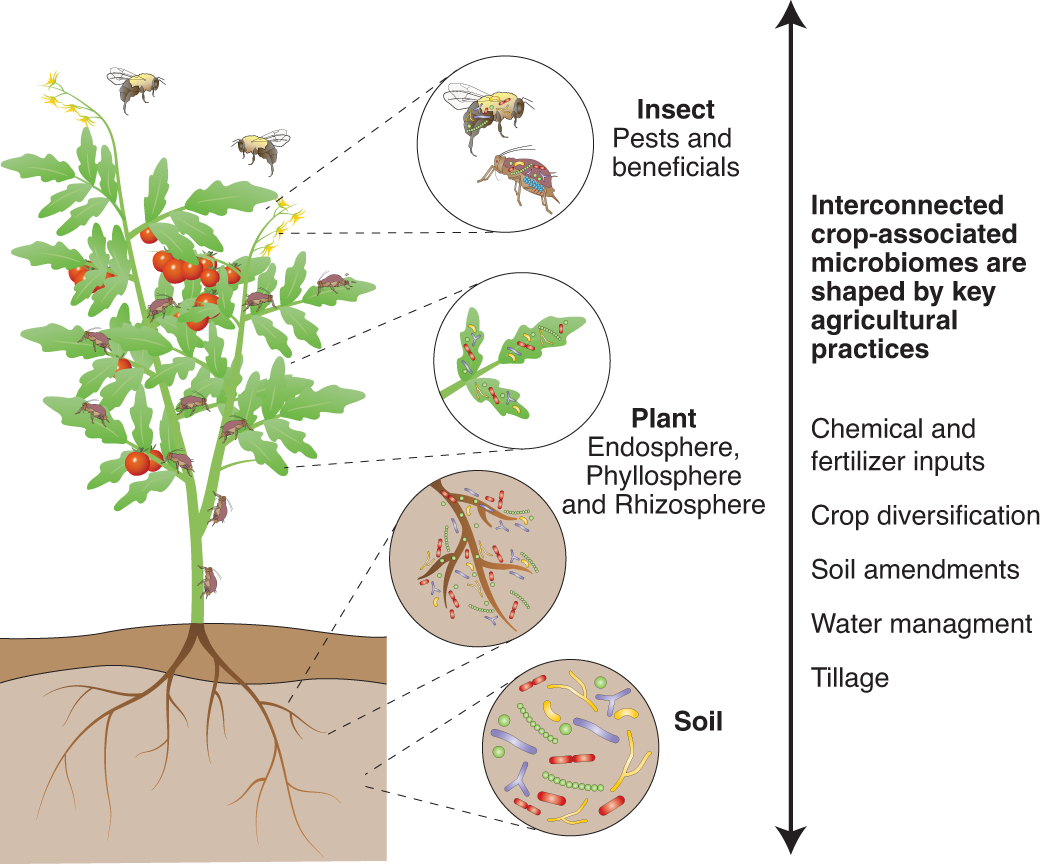With the increase in the world's population, the demand for food, energy and water is rising as well. However, the resources available are finite and have a limited capacity to meet this growing demand. Globally, around 90 billion tonnes of primary resources are extracted and used each year, with less than 10% being recycled. In addition, agricultural and land-use changes account for around 31% of global greenhouse gas emissions, making the agricultural sector a major contributor to climate change.
Setting the scene
To tackle these challenges a shift from a linear food production system towards a circular one is needed. In a circular economy, value chains are closed loops, whereby materials originally intended for disposal are reused, recycled, or reprocessed through the economy. The circular economy is based on the key principals of keeping products and materials in use, designing waste and pollution out of the system, and regenerating natural systems. By doing so, a circular economy approach not only addresses the environmental challenges, but it also helps to drive innovation, create new business practices, and create new jobs through the utilization of agricultural waste, by-products, and co-products. Within a circular economy, new technologies can convert food waste into organic fertilizers and biomaterials, to medicine and bioenergy. Development of a circular economy can also provide value through the creation of new industries and jobs.

Circular Economy in Agriculture (Source: Agrocycle)
In the agribusiness sector, two distinct cycles of circular mode are present: the technical and the biological. The technical cycle applies to agro-industrial technologies through maintaining, returning, renewing, and reusing agri-processing technologies that support agricultural efficiency, while also minimizing waste and providing cost savings. The biological cycle recaptures value from waste in the system through the reuse of food, utilization of by-products and food waste, and nutrient recycling. Waste becomes the input to new products to support crop production, food processing, feed, and energy, as well as the cosmetic and pharmaceutical industries.
/BioTechCycle-Figure%202.jpg?width=1024&height=576&name=BioTechCycle-Figure%202.jpg)
Biological and Technical Cycles in the Circular Economy (Source: Sustainable Planet)
The concepts of the circular economy are already being successfully applied in agricultural practices.
- The conversion of biological waste such as crop stalks, leaves and pods, and animal waste into fertilisers which are rich in nitrogen, phosphorous, potassium and other nutrients, which can also reduce the cost and resource demand for external inputs of synthetic fertilisers.
- The reuse of wastewater from cities, towns, and agricultural activities such as animal production and irrigation runoff, which if treated properly, can also be reused for pastures and plant production.
- The direct or modified use of biomass from plant and animal waste to produce biofuels that can be used for heat, electricity, or transportation fuel production.
- The reduction of waste and the increase in efficiency in agriculture by using research, remote sensing, and data collection to ensure that just the right amounts of substances are used at the right time in exactly the right place.
Circular econonmy Application in Agrifood
But what does circular economy mean for the agtech industry? How are EU regulations impacting the agtech industry in the transition to a circular economy? These questions were discussed and answered by Sven Goenster-Jordan (Agronomist at K+S Group), Anne Lamp (CEO and co-founder of traceless materials), Dr. Prateek Mahalwar (Co-founder and CEO of BIOWEG), and Tomasz Ciamulski (Founder and CEO of FibriTech) during the webinar on “Circular economy: Applications in the agri-food sector” organized on 1st February 2022 by RootCamp (moderated by Dr. Philipp Rittershaus) and hosted on DLG e.V. - German Agricultural Society platform.
The opportunities and challenges
There are several start-ups implementing concepts of the circular economy in their business and develop new technologies for agricultural applications. During the webinar, three of them presented their solutions:
The German company, traceless, offers a holistically sustainable solutions to conventional plastics and bioplastics. Traceless innovative, patent pending technology transforms raw materials (leftovers from agricultural industries, such as starch or brewery residues) into base material in liquid or dry form, which are then being manufactured in alternative products for plastic films, hard plastics, and coatings. Traceless materials are particularly suitable for products that are used only once, like single-use packaging, products with high abrasions that end up in nature and products in close contact with humans. Traceless products are naturally biodegraded in 2-9 weeks, depending on their thickness.
Bioweg (Germany) combines biotechnology, material science and machine learning to create highly functional and customizable bio-based materials and ingredients for cosmetics, food, personal and home care, as well as agriculture. One of the Bioweg´s application in agriculture includes a biodegradable seed coating polymer that is stable in a wide range of pH and temperatures, has a high-water holding capacity and it can load active ingredients like pesticides and pigments.
Fibritech (Poland), on the other hand, develops 3-D forming materials based on renewable organic resources, mainly natural cellulose fibers from plants, by using an innovative physical process. The final material is of organic nature and can be easily recycled or turned back to the nature (degraded, composted). The properties of the fibrous materials allow them to be adapted to various applications e.g., packaging, bags, design and usable items, soil-less substrates, air filters, and construction materials like thermal and sound insulations.
During the discussion, Sven Goenster-Jordan from K+S Group highlighted the need of joint research and development of technologies for the circular agriculture to tap the waste stream, and the need of policy support from the regulatory side (e.g., EU Fertilising). In addition, speakers agreed that the main challenges for the adoption of circular practices or development of new circular technologies are:
- Competition for resources. Bio-based products are primarily used for food production, bioenergy. Therefore, many of the circular technologies are depending mainly on waste or by-or co-products.
- Industrial scalability of the circular technologies. There is a need to reduced costs and increase efficiency in the production process to be able to compete with existing products (e.g., plastics). In addition, a review of the taxes and subsidies system related to many circular activities should be reviewed, to increase the offer and consumer demand for circular products, and of course, to promote the recycling of waste and returning it to the processing cycle.
Conclusions
Looking forward, the adoption of circular economic practices and technologies has great potential to close the loop on waste and enable society to meet the increasing demands of good and service, limiting at the same time the environmental impact and the resource consumption. However, many challenges remain in both the technology and consumer practice that must be overcome before a circular economy can be fully realised. Therefore, new technologies and systems that help to close the loop on waste are in development and gaining interest, progressing towards a more sustainable, circular economy.
What are your thoughts about circular economy? Share your comments or questions here and follow us on LinkedIn! All Agritechnica webinars have been recorded and can be watched on our YouTube channel.
/rootcamp_logo_white_2022.png?width=2123&height=630&name=rootcamp_logo_white_2022.png)

/RC%20logo%202022.png?width=2325&height=703&name=RC%20logo%202022.png)






